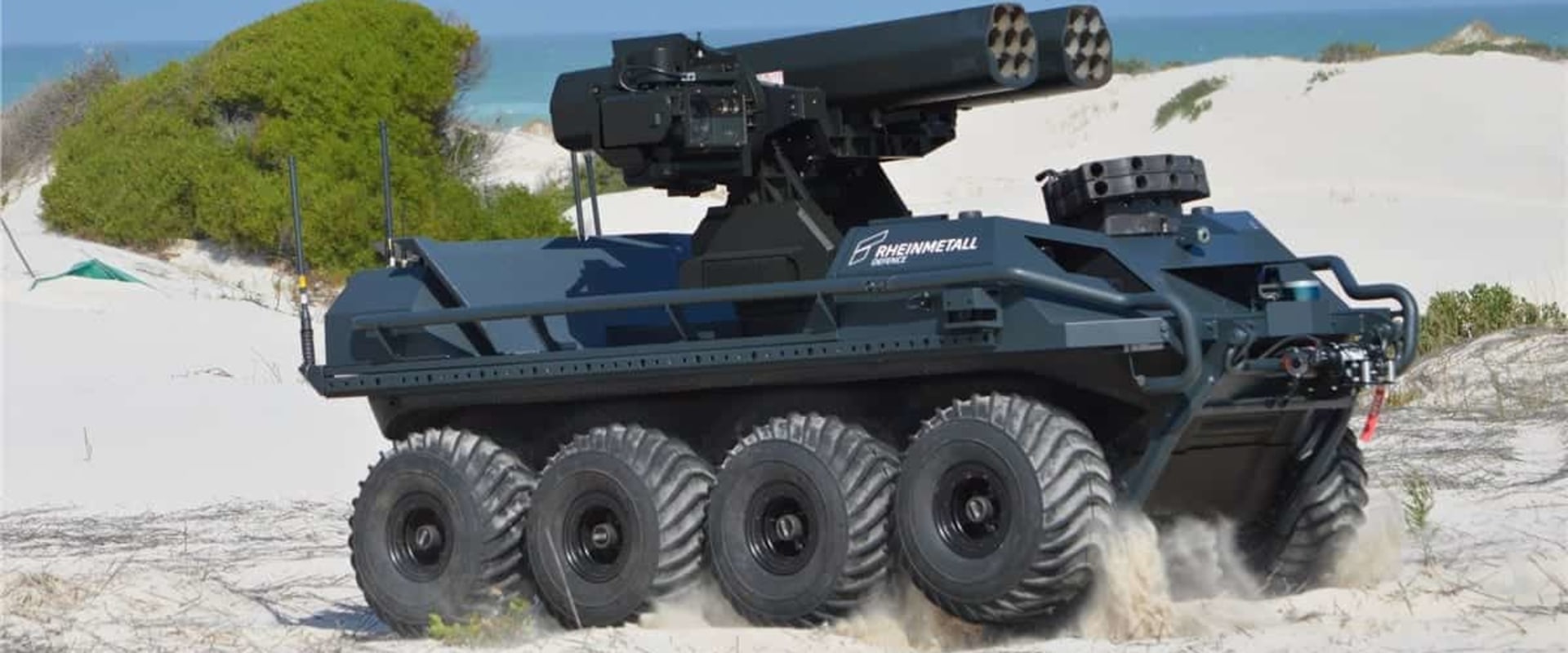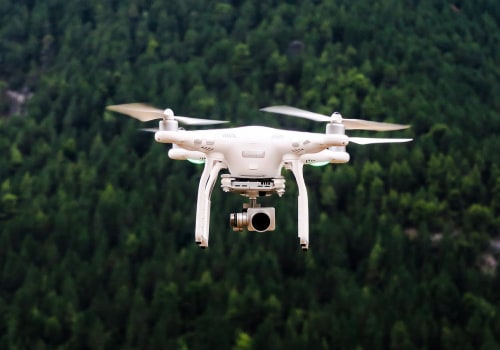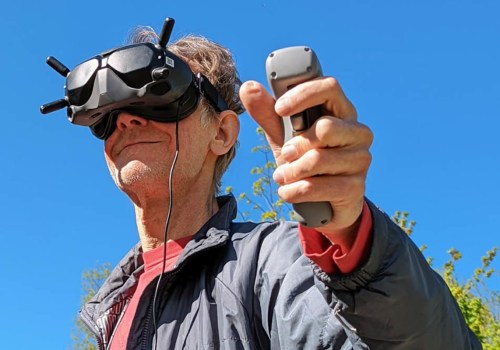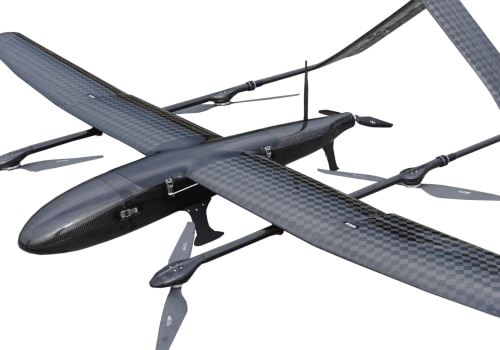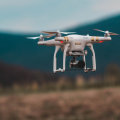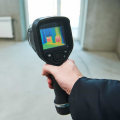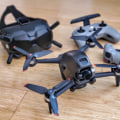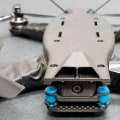Unmanned Combat Ground Vehicles (UCGVs) are revolutionizing the way we think about warfare. These autonomous robotic systems are changing the face of modern battlefields, with their ability to carry out complex tasks without the need for human intervention. From reconnaissance missions to bomb disposal, UCGVs are taking on dangerous missions that would otherwise be impossible or too risky for humans. In this article, we will explore the potential of UCGVs and examine how these innovative technologies are transforming the future of military operations. Unmanned Combat Ground Vehicles (UCGVs) are a type of military drone that operate on the ground, as opposed to aircraft, and are used for a variety of military operations.
UCGVs are equipped with state-of-the-art sensors, navigation systems, and weapons systems, allowing them to be used for reconnaissance, surveillance, and combat missions. The development of UCGVs began in the early 2000s, and the technology has advanced rapidly since then. UCGVs have become increasingly sophisticated and are now capable of performing a variety of complex tasks. UCGVs can be used for reconnaissance and surveillance missions, including detection of enemy forces and gathering intelligence.
They can also be used in combat missions such as attacking enemy positions and providing fire support. The use of UCGVs raises important ethical questions. One of the most pressing concerns is how these machines should be programmed to make decisions on the battlefield. In the future, it may be necessary to develop ethical frameworks to ensure that these machines are programmed to make decisions in a way that is consistent with international standards of human rights and international humanitarian law.
There are several different types of UCGVs currently in use, each with its own advantages and disadvantages. For example, tracked vehicles are more agile than wheeled vehicles and can handle rough terrain better, but they are also slower and noisier. Wheeled vehicles can reach higher speeds but may not be able to navigate certain kinds of terrain as well. One of the most promising developments in the field of UCGVs is the development of autonomous systems.
Autonomous systems allow machines to make their own decisions without direct human input. This technology is still in its infancy, but it has the potential to revolutionize the way that UCGVs are used on the battlefield. The future of UCGVs is bright and the technology is rapidly advancing. As the technology continues to evolve, UCGVs will become increasingly sophisticated and will be capable of performing ever more complex tasks.
It is likely that UCGVs will become an integral part of modern warfare in the near future.
What are Unmanned Combat Ground Vehicles (UCGVs)?
Unmanned Combat Ground Vehicles (UCGVs) are a type of military drone designed for operations on the ground. These autonomous robots are capable of performing a wide range of tasks, from surveillance and reconnaissance to offensive operations. Compared to aerial drones, UCGVs are better suited for operations in complex environments and can navigate around obstacles with greater ease. UCGVs are equipped with various sensors and navigational systems, allowing them to detect and recognize objects in their environment. This allows them to respond to changes in their surroundings, such as the presence of obstacles or other objects.Additionally, some models are equipped with weapons systems that allow them to engage targets autonomously. UCGVs are a relatively new type of technology, and there are still many challenges associated with their use. For example, developing robust algorithms for navigating and avoiding obstacles is a difficult task, as is ensuring that the robots do not harm civilians or friendly forces in the process. In conclusion, Unmanned Combat Ground Vehicles (UCGVs) are an important development in military technology, offering greater autonomy and capabilities than other types of military drones. While there are still challenges associated with their use, UCGVs are expected to become increasingly popular in the years ahead.
The Future of UCGVs
Unmanned Combat Ground Vehicles (UCGVs) have been used for a variety of military operations for many years now. As technology continues to advance, the capabilities and applications of UCGVs are expected to expand further.One potential advancement for UCGVs is the development of autonomous machines. With the advancement of artificial intelligence, it is possible that UCGVs may be able to operate without any direct human control. This would allow them to be deployed in situations where they could perform tasks faster and more accurately than a human operator. Additionally, autonomous UCGVs could be used to perform dangerous operations such as disarming bombs or entering hazardous environments.
Another potential advancement is the use of swarm technology. Swarm technology could allow multiple UCGVs to work together to achieve a common goal. This could result in greater efficiency and accuracy in military operations. Additionally, swarm technology would make it easier for UCGVs to coordinate their actions, allowing them to perform complex missions without human intervention.
Finally, UCGVs could potentially be equipped with more advanced sensors and cameras. This would allow them to gather more detailed information about their environment, making them even more effective in the field. Additionally, these sensors could be used to detect enemy forces and identify potential targets. These advancements in UCGV technology have the potential to revolutionize the way military operations are conducted.
As the capabilities of UCGVs continue to grow, they will become an essential tool for modern militaries around the world.
Capabilities and Applications of UCGVs
Unmanned Combat Ground Vehicles (UCGVs) are a type of military drone used on the ground for a variety of operations. These specialized robots are designed for both offensive and defensive operations, as well as reconnaissance missions. They are highly mobile and equipped with a range of sensors and weapons systems, making them an invaluable asset to any modern military force. UCGVs can be used to detect, identify, and engage targets from a safe distance. They are also capable of carrying out surveillance operations, providing real-time intelligence to support troops on the ground.Additionally, UCGVs can be used for explosive ordnance disposal, bomb disposal, and mine clearance. UCGVs can also be used in search and rescue operations, helping to identify survivors in dangerous environments. In addition, they can provide logistical support by delivering supplies and equipment to hard-to-reach locations. UCGVs are also being used by law enforcement agencies to safely apprehend suspects in hazardous situations. The use of UCGVs offers numerous advantages to military forces. These include increased safety for both troops and civilians, greater accuracy in target identification and engagement, improved mobility, and reduced costs associated with maintenance and operation.
By incorporating the latest technologies into their design, UCGVs are becoming increasingly capable of performing complex tasks in a variety of environments.
Types of UCGVs
Unmanned Combat Ground Vehicles (UCGVs) come in a variety of shapes and sizes. These vehicles can be divided into three main categories: wheeled, tracked, and hybrid. Each type has its own advantages and disadvantages that must be taken into consideration when selecting the most appropriate vehicle for the desired mission.Wheeled UCGVs
Wheeled UCGVs are the most common type of unmanned ground vehicle.They are designed to move over terrain that is relatively flat and can reach speeds of up to 65 km/h (40 mph). They offer excellent maneuverability and can traverse difficult terrain such as mud, snow, and sand. The main disadvantage of wheeled UCGVs is their limited load capacity, which restricts the amount of payload they can carry.
Tracked UCGVs
Tracked UCGVs are designed to traverse more rugged terrain than wheeled vehicles.They have superior traction and can climb steeper inclines. However, their top speed is lower than wheeled vehicles (usually around 20 km/h (12 mph)) and they require more power to operate.
Hybrid UCGVs
Hybrid UCGVs are a combination of wheeled and tracked vehicles. They combine the maneuverability of wheeled vehicles with the traction of tracked vehicles, allowing them to traverse difficult terrain while still maintaining high speeds.However, they are more expensive than either wheeled or tracked vehicles and require more maintenance.
Ethical Considerations of UCGVs
The use of Unmanned Combat Ground Vehicles (UCGVs) in military operations poses a variety of ethical considerations. As these vehicles are capable of making decisions autonomously, it is important to consider how they will be programmed to make those decisions on the battlefield. It is also important to consider the implications of using UCGVs in combat, such as their potential to cause harm to civilian populations and their potential to limit the accountability of military personnel. One of the key ethical considerations when using UCGVs is their capability for autonomous decision-making. This could pose a challenge when it comes to programming them to adhere to international laws of war.Additionally, there may be questions around how these autonomous systems can be held accountable for their actions on the battlefield. It is important to consider how UCGVs can be programmed to make decisions that are consistent with international law and the rules of engagement. Another ethical consideration related to the use of UCGVs is the potential for harm to civilian populations. These vehicles have the potential to cause significant collateral damage, and it is important to consider how best to mitigate this risk. Additionally, there may be questions around how these autonomous systems can distinguish between combatants and non-combatants, as well as how they can be programmed to make ethical decisions on the battlefield. Finally, it is important to consider the implications of using UCGVs in combat on accountability.
The use of these autonomous systems could potentially limit the accountability of military personnel by enabling them to avoid direct engagement with enemy forces. This could potentially lead to a decreased sense of responsibility among military personnel, which could have far-reaching implications.
History and Development of UCGVs
Unmanned Combat Ground Vehicles (UCGVs) have been an integral part of military operations for decades. Starting in the late 1950s with the introduction of remotely piloted vehicles for surveillance and reconnaissance, UCGVs were developed to provide military forces with unmanned ground-based solutions for a variety of tasks. In the decades since, UCGVs have gone through a number of technological advancements and improvements, allowing them to be used for a variety of missions such as reconnaissance, surveillance, target acquisition, and even direct combat operations. The earliest UCGVs were typically simple machines, often resembling remote-controlled cars or trucks.They were often equipped with basic cameras and sensors for basic reconnaissance purposes. As technology advanced, so did UCGVs, with improved sensors, cameras, and communications systems being added to the vehicles. This allowed UCGVs to be used for a variety of tasks such as search and rescue operations, surveillance missions, and even direct combat operations. In recent years, UCGVs have become increasingly sophisticated. Modern UCGVs are often equipped with advanced sensors and cameras, as well as advanced navigation systems that allow them to autonomously navigate their environment.
They can also be equipped with weapons systems that allow them to engage targets without human intervention. This has opened up a wide range of possibilities for the use of UCGVs in modern military operations. The development of UCGVs has been an ongoing process and is likely to continue into the future. As technology continues to improve and become more affordable, more applications for UCGVs are likely to be found in both military and civilian contexts. With this in mind, it is clear that UCGVs will remain an important part of military operations for years to come. In conclusion, Unmanned Combat Ground Vehicles (UCGVs) offer tremendous potential in terms of military operations, with their ability to provide advanced capabilities and applications, while also considering ethical considerations.
As technology continues to improve and evolve, the use of UCGVs is sure to become even more widespread in the future. From surveillance, to reconnaissance, to ground combat, UCGVs are a powerful tool that can be leveraged by military forces around the world.
